I howl back at the dogs. Awooooooo! All of us sound an alarm, a message to the empty streets which says: What are you doing out here?I start on Ecuadorian time: 12:06am. Lukla, Nepal — the jumping off point for this deep dive into the unknown — sleeps soundly as my breath forms a cloud in front of me. Only the town mutts notice, arfing as I walk to the arch, the spinning prayer wheels, that mark the start of the 104km journey to Everest Base Camp (and back). There’s no starting gun, no fanfare, no chip timing. I start my Polar Vantage M (hoping that it’ll last the 20-24 hours I’ve predicted I’ll need) and I’m off, jogging down into the brisk, bright darkness.
Seriously, though, what am I doing here? Why am I about to run 104km through the Himalayas by myself?
Great questions.
***
BACKGROUND
As with seemingly everything in life, this big, long day is the result of a seemingly random cascading row of dominos, serendipity at its finest. I’d run the U.S. Olympic Marathon Trials in Atlanta just two weeks earlier and had originally planned to spend about a week in the Spanish Pyrenees climbing mountains, but received a message from a friend a few days before leaving saying that the weather for the week we had planned looked terrible and maybe it’d be better to reschedule.
With a suddenly free week (or two) post-marathon, I stared down the paradox of choice. I had literally the whole world at my fingertips and, after some googling about mountain conditions in Bolivia, Japan, France, USA, et al., I finally settled on a life-long dream of heading to Nepal and exploring the Himalaya.
A note about COVID-19 — when I was making all these plans, the Corona Virus was but a minor epidemic in a handful of East Asian countries; Europe and the USA were barely paying attention yet. A few people who were following the news (like my parents) seemed alarmed at my plans to go to Asia, but Nepal had no cases yet and so the risk seemed low. I got a bargain last minute ticket and was off.
I arrived in the chaos of Kathmandu — a frenetic city unlike any I’d ever visited — and quickly hopped a 15-passenger twin-otter turbo-prop for the forty minute flight up to Lukla. After nearly 50 hours of travel from Boston, I stepped down onto the vertiginous runway and inhaled the thin, clean, high-mountain air.
I’d met a Nepali guy, Jitu, in KTM who tried to up upsell me on the idea of hiring a guide for my time in the Himalaya and, like so many, urged me to scale back my expectations, not move too quickly, have a healthy dose of fear for the high altitude, the ornery weather, and the overall incomparable scale of the landscape out here. Being an ignorant and over-confident foreigner, I smiled, nodded, and promptly ignored him.
I began by hiking and jogging my way up to Everest Base Camp in two long days — a route for which Jitu had told me to allow 8 to 10. I descended back down and joined another trail, the “Three Passes Loop” (named for three very high and technical climbs of 5300 to 5600m). By the time I’d made my way back to Namche — the second largest town in the region — barely a week had passed. Having been without internet, I connected to the network in Friendly Lodge and was flooded by messages, news, and social media posts documenting the exponential growth of COVID-19 and its effects on the world, the USA, and the running community.
In the handful of days since I’d gone incommunicado, schools had shut down, cases had skyrocketed in Europe and the US, events had been cancelled, and the World generally seemed much, much more concerned. Thus, is the way of exponential growth.
Of course, I was immediately concerned for my parents — both in their early sixties — along with other family and friends. But (more relevant to this narrative), I also began reading about the cancellation of sporting events, from the NBA season to the Boston Marathon. I heard from my agent, Josh Cox, and some of my friends in the running community, and it looked like any upcoming spring races would likely be cancelled or postponed to the Fall.
I felt overwhelmed. Even as someone who reads Reddit regularly (which community was one of the earliest to preach the seriousness and oncoming pandemic of Corona well before CNN or Fox News did), I truly hadn’t expected it to have such an immediate and consequential impact on the life of me and my friends and family.
I remember sitting there in Namche, sipping a steaming mug of Sherpa tea as the frigid wind blew the dusting of snow from rooftops and thinking that maybe, given how well that first week or so of exploration had gone, I should try to really go for something here, not just treat it as a vacation, a (relatively) relaxed romp around the mountains. I had felt good on those high passes, recovered well from the Trials, covered way more terrain than anyone had told me I’d be able to. I began to scheme.
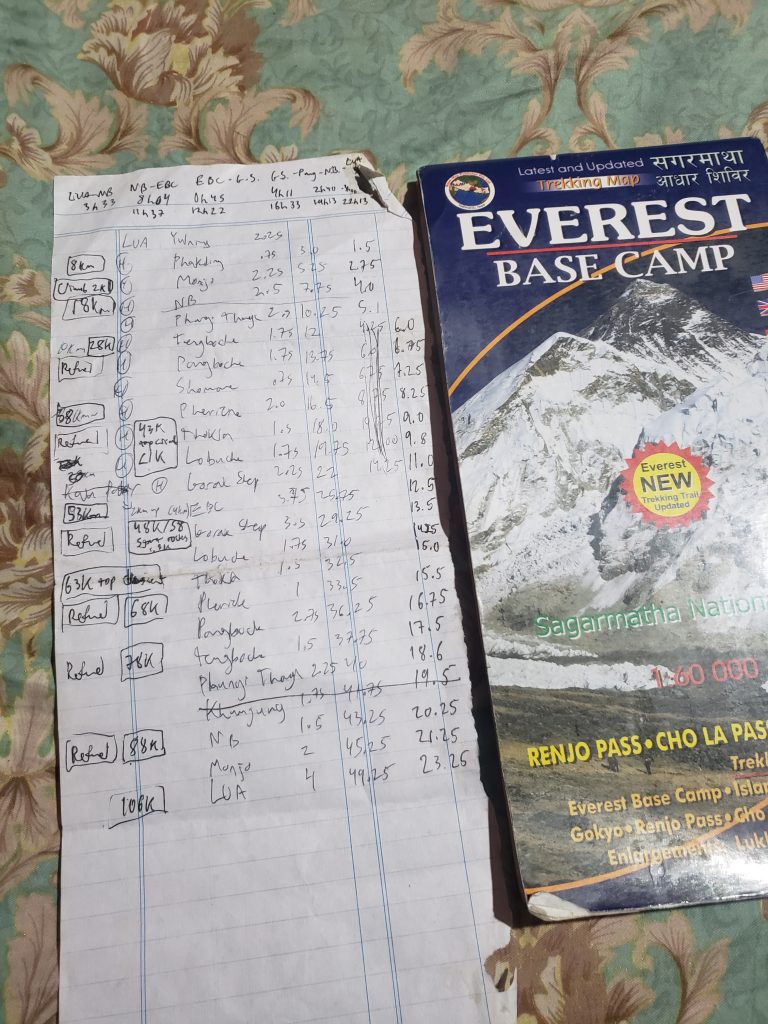
Chicken-scratching out a plant (N.B. the far right column is my predicted time for myself which ends up at 23h15m, not a bad estimation!)
I’d known about the Everest Base Camp FKT (fastest known time) for months, if not years, and had even stashed it in the back of my mind as one of the rainy-day-projects that appeared to combine a new and unique challenge w/ a part of the world I wanted to visit. The route is essentially an out and back, meaning that there were essentially three FKTs: an uphill record (15 hours by Pemba Sherpa, 2010), a downhill record (12 hours, 33 minutes by Ben Southall), and a round-trip record (30 hours by Pemba Sherpa, 2010). Now, here I was, with the time and energy to tackle this. I might as well strike while the iron’s hot.
I got my maps out, consulted my calendar, stocked up on oreos, and, finally, on the afternoon of March 15, with a generously sunny day coming up, I laid down at 4pm and rested fitfully until my alarm sounded some seven hours later to prepare me for my midnight departure.
***
GOING UP
Now, it’s all real. I’m hopping down the half-meter stone steps that begin the eventual journey upward nearly two vertical miles. I consider this seemingly wasted downhill energy as I continue, nearly 300 vertical meters down in the first few kilometers. My headlamp illuminates the pitch black night and I feel like I can maintain this effort all day; we’re about to find out.
After 30 minutes, my watch beeps, telling me it’s time to eat. I’ve learned from my mentors and friends to respect the old adage that “ultra running is as much an eating [and digestion] competition as a running competition”, and so I’ve tried to systematize my caloric intake to make it as second nature as possible. Every half hour, I eat 100 to 150 calories, depending on what I feel like. This could be two oreos, a gel, 7 ritz crackers, a stroopwafel, some chapati-and-egg-roll-up, a packet of gummies, half a mars bar, etc., etc. One thing I’ve learned is to have options; sometimes I can eat oreos for 6 hours straight and sometimes I need something salty, savory, to make my stomach cooperate. Either way, it’s a system that’s worked and has taken some of the subjectivity (“eh, I don’t feel that hungry”) out of fueling.
These first three hours pass in a dark blur. The terrain is exceptionally runnable (for this trail), meaning that I’m moving at 6’00 to 10’00/km, still a good amount of steep climbs and descents as the trail rolls through the lower valley. I cross a half-dozen steel wire suspension bridges which, in the impermeable darkness, make for dream-like traverses. The only indication that I’m not navigating some Twilight-Zone outer space is the roaring of the river 200m below. My headlamp shines too weakly to reach the opposite side and the span appears to fade into the blackness.
I’m actually warm. I’m running in my thin, long-sleeve t-shirt w/ the sleeves rolled up as I’m generating a decent amount of heat and the lower-altitude (only 2500-2800m) here in the valley stays fairly warm. By the time I reach the first major climb from the final steel-wire bridge up into Namche (around 16km), I’m actually sweating and worried that I’m going to chill at some point.
That climb is steep and relentless, but (relatively) low (2500m to 3500m) and thankfully short. I’m making great time and before the three-hour mark, I’m in the sound-asleep metropolis of Namche Bazaar, still setting off every alarm-dog I pass. I split my watch at the corner grocery store which I decided marks the center of town and begin the steep stone step climb up towards the Tengboche trail.
Despite the warmth in the lower valley, now, 1000m higher, the temperature is frigid. It’s after 03:00 — the coldest part of the night — and I find that a light coating of snow has covered the trail up here. The steps are mildly treacherous, the snow making them slick, but once I top out and pass the giant stone Buddha at the top of the hill, it flattens out and, despite the snow and altitude of 3600m, is perfectly runnable.
This is one of my favorite sections. A wide, buffed dirt trail continues mostly flat (interrupted by a handful of stone steps here and there) from the top of Namche for about 4km until there is a steep descent down into Phungi Thenga and then a climb up to Tengboche Monastery. I really let myself run these kilometers and, despite the absolutely arctic temperatures, I am having a generally grand time. I can see the outlines of Ama Dablam and the Everest Massif illuminated by the glow of the soon-to-rise moon. I’ve got one of the most famous trails on Earth all to myself. Life is good.
I take the descent into Phungi Thenga slowly and cautiously, the centimeter or two of snow making the already sketchy down-climb even hairier, and cross yet another steel suspension bridge before jogging through town, past the permit-check-point (which is obviously not staffed at 04:00) and begin the long climb up to the Monastery.
I take my first real break here — refilling my vest’s water bottle from the bigger bottle in my backpack, eating half a chapati-egg-roll, and taking off my big poofy coat as I know I’ll warm up plenty on this climb (3300m to 3900m). I also put in my headphones (one ear only!) and start the “Hamilton” soundtrack, as I know it’ll help to have some extra motivation and stimulus navigating this fairly monotonous, still dark, stretch. I’m singing along w/ Lin Manuel. Life is still fantastic.
Pure night-time holds over at the top of the monastery and I begin to feel extremely cold heading down the other side. The temperature appears to have dropped even more (I’d later learn it was -20C, -4F, the coldest temperature ever recorded in March). One of the many things I learn during this big, long day is when your hands get super cold, you can no longer rely on them for basic functions (e.g. opening a gel, buttoning up your pants, or, counterproductively enough, putting your mittens back on). I know the only thing I can do is keep moving, keep trying to generate heat; so I do. I jog, walk, and slide down the steep, icy descent to the final suspension bridge, blowing warm air into my mittens when I can, begging the sun to rise more quickly, the wind to calm down. (“Stay alive; that would be enough…”)
Crossing to the opposite side of the valley, the trail rolls along rockier terrain (still snow-covered) as the pre-dawn light begins to illuminate the landscape. Ama Dablam towers above me as I pass Pangboche (4000m) and, distracted, make the one wrong turn of the day, heading downhill towards the river and Dingboche instead of uphill and over the pass to Pheriche. Luckily, I quickly realize my mistake and cut uphill through waist-deep snow back onto the trail, over the high pass at 4300m and down to the river and across into the flat(ish) plain that surrounds Pheriche.
I can see the light of the morning sun, which started by illuminating the top of the World, Everest herself at 8848m, and then logarithmically descending down to our measly 4000-something meters. I pass the town and the line of light is just across the valley and finally the air is beginning to warm. It’s approximately 07:00 now and I’m still ahead of my predicted schedule (mostly thanks to the fast first segment through the valley). I stop again to de-layer, my hands finally thawing, refilling my bottle again, and continue on.
This segment rises gradually and then steeply through the floodplain at around 4000m up to a steep “altiplano” style landscape (though, now it’s still all covered in snow) until reaching the edge of the Khumbu Glacier at about 4850m. We then dive down and crossing the immense boulder-field, and then rising steeply into the “town” of Thukla (maybe three buildings) on the other side before one last zig-zagging rise up to Lobuche at 4950m, approximately 44km from the start.
Though the sun now shines, I struggle to stay positive and engaged throughout this long climb. Perhaps it’s the 7+ hours of continuous movement, perhaps it’s the ever decreasing supply of available oxygen, perhaps it’s the fact that Hamilton is over (“Who tells your story?”), perhaps it’s the knowledge (that I’m trying very hard not to face) that every step forward and upward that I take I’ll have to retrace in order to get back; but, honestly, I am really just not feeling great.
As I cross the glacier, I turn the music back on (a random playlist of real bangers) and, as I begin the last really steep uphill stretch, am feeling more optimistic. I arrive in Lobuche just before 09:00 and, for the first time, EBC really feels palpably close.
I restock in Lobuche for the first time, buying some more water and oreos (seriously, where’s my Nabisco sponsorship at?), and continue across the relatively flat kilometers between Lobuche and the edge of the second glacier crossing, the final 2km into Gorak Shep. I end up hitting a lot of pedestrian traffic approaching G.S. but the hikers are extremely generous in letting me by, many apparently having heard of my attempt from the trail grape-vine and/or recognizing me as “that guy in the blue HOKA jacket” that they’ve seen galavanting around for the previous couple weeks.
Gorak Shep is the last permanent human settlement up in the Khumbu Valley — a sprinkling of sad lodges at the brutal altitude of 5164m. I’ve passed 50km and now can literally almost see EBC across the bleak rocky and icy expanse ahead. I actually run across the flat depression that leads to the edge of the moraine and am feeling tired but excited to finally reach the high-point after 10 hours of continuous movement.
But, within a few minutes, as I begin the first of the steep climbs along the ridge-line bordering the Khumbu glacier, I start to feel just really bad. Usually, I find that I’m able to handle high altitude well; both my ability to run quite quickly at “lower” altitudes, e.g. in Quito, and my ability to function and generally not feel too terrible at “higher” altitudes, e.g. over 5000m. In the previous week, I’ve been well over this height (as high as 5650m) several times, even spending a night in Gorak Shep at 5150m. Still, today, for whatever reason, it just feels different.
Within those 2km from Gorak Shep to EBC my mind shifts from thinking “I’m almost there! Wahoo!” to “I really might have to turn around and get heli-evac’d out of G.S.” It’s a hard feeling to describe but I simply feel unwell, like my body isn’t right. I feel light-headed, almost dizzy, like my heart is racing (but it’s not). I take a few long breaks to catch my breath, reduce my aggressive pace to a crawl, especially up the steeper pieces, and then finally, I see the few orange domes camped out at EBC. I plunge down into the glacier, checking my watch and seeing just a few minutes before the 11h00 mark, and actually try to push those last few meters to see if I can register a 10hXX uphill segment, but just miss it, arriving at the giant rock spray-painted w/ “EVEREST BASE CAMP 5364m” after 11h01.
***
BACK DOWN
In planning this record attempt, I figured it made sense to tackle it at the end of my time in Nepal. The escalation of the COVID-19 situation had made me somewhat anxious to get back to the USA — a long journey which begins w/ a return turbo-prop flight from Lukla to Kathmandu before a multi-day trip back through Doha. I reserved a flight from KTM to Doha to Los Angeles leaving Wednesday night and thus — listening to the many Nepalis who assured me it was too much of a risk to take the prop flight out on the same day as my international flight (as those flights were often cancelled due to weather) — I booked a ticket out of Lukla for 06:50 on Tuesday morning.
Working from the other side, I’d been forced to push my big, long day back to Monday due to storms over the weekend.
What this means, dear reader, is that as I mill about EBC for 9 minutes and 47 seconds, snapping some pictures, eating some chapati-egg-roll-up, I also undertake some (remarkably challenging) mental arithmetic from which I realize that — barring a multi-thousand-dollar heli-rescue — there is exactly one bipedal-powered way back to Lukla and I have less than 20 hours until that tiny twin-otter will roll down the impossibly steep runway out of Lukla, whether I’m on it or not.
And so, I bid farewell to the boulder and the towering faces of Everest, Nuptse, and Lhotse and the dozen hikers smiling and waving to the camera and begin the 52km journey back to Hiker’s Inn and my flight back to the big city.
The adrenaline that had propelled me through those final few minutes, trying to break 11 hours, has run dry and I am slogging along the moraine and, again, feeling just not well at all. Every ridge crest that doesn’t reveal the handful of buildings that comprise Gorak Shep is a heartbreak. Finally, feeling quite sorry for myself indeed, the trail spits me out of the glacier onto the wide, flat plain that marks the edge of town.
I take a longer break than planned. I run into one of the lodges, dump a half-shaker’s worth of salt onto my chapati-egg-roll-up (listening to my cravings), but I know that there’s only one thing that will really help: going down. For whatever reason, my body is struggling more w/ the altitude today and I know that the only thing to do is get myself lower as quickly as possible.
One of the things I learn about myself during this big, long day is my ability to accept much larger chunks of suffering than I have in the past. In a marathon, even a 50km race, you might really have to push through some serious discomfort for an hour, hour and a half. But as I leave that lodge, I know I’m going to feel just really uncomfortable for two, maybe three hours, who knows?, maybe even all ten or twelve hours back. But, I’ve got to catch this flight and there’s only one way down and the quicker I get started, the more steps I line up, the lower I’ll get, the better I’ll feel.
So, I head off, through the long glacier crossing — the most technical part of the route — and down towards Lobuche and Thukla. Every time I check my watch and see the altitude is a tad lower, I give myself a little gold star: Great job, every meter down is a meter you’ll feel better. Just get to Lobuche.
I do get to Lobuche, restock quickly, and continue down the steep switchbacks into Thukla. I pass a crew of Aussie guys whom I’d met the week before and had gotten pretty amped about my attempt, and apparently they’ve told everyone else on the trail, as they all give me a spirit-raising cheer, a wall of high-fives, just the energy boost I need as I run by, cross the glacier one last time, well below 5000m now, and begin the long descent into Pheriche.
I’d been right; I do feel immensely better with a few more oxygen molecules in the air and I’m actually jogging down to the 4300m plane, Pheriche visible from way too far away. It’s approaching 15:00 now as I pass through town, much of the snow at this lower altitude having melted and turned the dirt trails to mud, slowing the pace as I cross the valley and climb steeply up the trail toward Pangboche. I’m passing more trekking groups now, all of whom seem to know who I am (I’m guessing the Aussies are to blame/thank) which keeps me jogging, at least barely.
Before 17:00, I’m back to the first of many suspension bridges to come and beginning the climb back up to Thengboche. The snowpack of the morning has melted entirely and the trail has been stomped into a filthy mud-pit by dozens of trekkers, yaks, and donkeys alike over the previous twelve hours. I try to rock-hop (I am in my HOKA Challenger ATRs after all which, despite handling most of the terrain fantastically, are not super water-proof) and eventually give up, simply looking for the shallowest swaths. This section should be one of the quickest and most runnable but the mud has rendered it slow, tedious, and frustrating.
I reach the high point at the monastery and carefully make my way down the other side, the mud continuing until about halfway down as things start to firm up. I’m still able to jog down this but my legs are beginning to feel the two vertical kilometers of net downhill (and much more cumulative) and the 17+ hours of relentless forward motion. My knees ache, my ankles throb w/ every hop off a steep step, my quads are beginning to quiver, threatening to give out. I’m surprised that, despite the huge net downhill, I don’t appear to be covering ground any faster than I had on the way up.
The climb back up from the river is where I realize how tired I really am. Despite the lower altitude (below 4000m now), I truly struggle to drag myself up this last significant climb (about 300m vertical). I have to pause and let myself stop, catch my breath; the switchbacks seem to never end.
But they do. And finally I see the sign for the split-off to Gokyo which marks the beginning of the runnable stretch back into Namche. The sun has set and the last light is fading; I’ve been moving for almost 19 hours continuously as I trade my sunglasses and cap for headlamp and beanie.
I’m able to jog a few gentle stretches, but I’m honestly not sure if it’s faster than power-hiking at this point. By the time I round the final corner and see the lights of Namche, it’s fully night again. I walk down the infinite steps into town — each one a ball-peen hammer to my knee-cap — and stop at my favorite corner store, buy one last roll of oreos and ritz crackers (no, but for real, Nabisco, hit me up), and continue down to the bottom of town.
My watch reads 19:25. 18km separate me from Lukla, a stretch I’ve covered in both directions multiple times between three and three and a half hours; but all those were fresh and required jogging the majority of the route. I know that sub-24 hours is still a possibility, but it’s not going to be easy.
Honestly, I really, really want to stop. I am really kicking myself, wondering why this route couldn’t have just ended in Namche — 85km seems like a great distance; I smell hot soup and as I pass the dozen hostels on the way out of town, I look inside to see hikers laughing around a warm cast-iron stove.
But, I’ve got to catch this plane. And record or no record, I know that if I do stop, sleep for a few hours and have a hot meal, there’s no way I’m going to make it. I wish desperately for a teleporter, for a zipline down the impending brutally steep descent, for a paved road where a taxi, even a crazed Kathmandu taxi, could pick me up and drive me back to my bed in Lukla.
Nope. There is only one way out. And I can either feel sorry for myself and be miserable for the next 3 or 4 or 5 or 8 hours; or, I can just turn my brain off, put one foot in front of the other, then do it again.
If I think about it logically as I stand at the top of that knee-jarring, toe-jamming descent, there’s no way I can wrap my mind around continuing on for four hours and twenty minutes longer. But I do just that. I do so by telling myself to just keep going, around this corner, over this bridge, down these stairs, up to this town, one more step, one more step, one more step.
The valley is empty and silent (save the dogs whom I am again alarming with my late-night perambulation). I stop in the center of one of the longer suspension bridges and turn off my headlamp, standing in the blackness of a dream, a trillion stars shining above, the rush of water impossibly far below.
Everything is blending together; each hamlet the same as the last; I swear I’ve come through here before.
And then I recognize the last little suspension bridge. I’m going to make it. I’m past 100km, maybe 3.5km to go, all uphill. I’m so disoriented. I think I’m on the final climb and then the trail will spit me out into another indiscernible township.
This is it. For sure. The sound of construction coming from inside that last building — seriously? It’s 23:40! — and up the stairs, through the gate, the prayer wheels. I stop my watch. 23 hours, 42 minutes, 13 seconds.
***
AFTERWARD
It seems like a lifetime ago when I walked down this dark and empty street, my vest and backpack and glycogen stores filled to the brim. Yet, it’s also deja-vu: just me and the mutts.
I sit on a step. I turn on my phone. I untie my shoes. I read a message from my brother about upcoming travel restrictions. I text my parents and tell them I’m alive, I’m finished.
Not a soul is afoot as I hobble back to the door of my hostel, the guard luckily wakes to my knocking and let’s me in; he seems to laugh as I pull myself up the three flights of stairs to my room. What the fuck did this kid get himself into?
I have had the privilege of spending nearly the entire day in the Himalaya, running, moving, pushing my body and my mind. Despite those moments, hours, of suffering, real physical and mental pain, I am so grateful for this great, big, long day.
In many ways, I began this route entirely unprepared; but, in a way, I think my ignorance served me well. Maybe if I’d known how much it would hurt, how much it would take, I wouldn’t have even set foot out the door. Instead, I learned so much en route; I learned how much more I can take, I learned the power of a good high-five, and I learned that completely removing the option of dropping early, creating a real-life, pragmatic need to finish, is the most powerful motivator out there.
Maybe most importantly, though, I learned more about my own personal answer to that question, the one that pops up when your mind and/or body begin to fatigue, in a workout, a race, or just trying to get out the door: “why?”
To me, that “why?” is driven by a deep desire, a need, to prove to myself (and to others, I’m not too ashamed to admit) that I have more, I can dig deeper, push harder than I thought before. If I’ve learned one thing in my twenties, it’s that I feel most alive when chasing those goals that I’m really not sure I can catch, the goals that seem scary, daunting, give me the howling fantods.
This was one of those pursuits. I truly didn’t know I’d make it back to Lukla in time to catch that flight when I set off. But, as I crossed that seemingly infinite bridge through the impenetrable night, unable to see the safety of land on either side, suspended in the blackness, I’d never felt more alive.

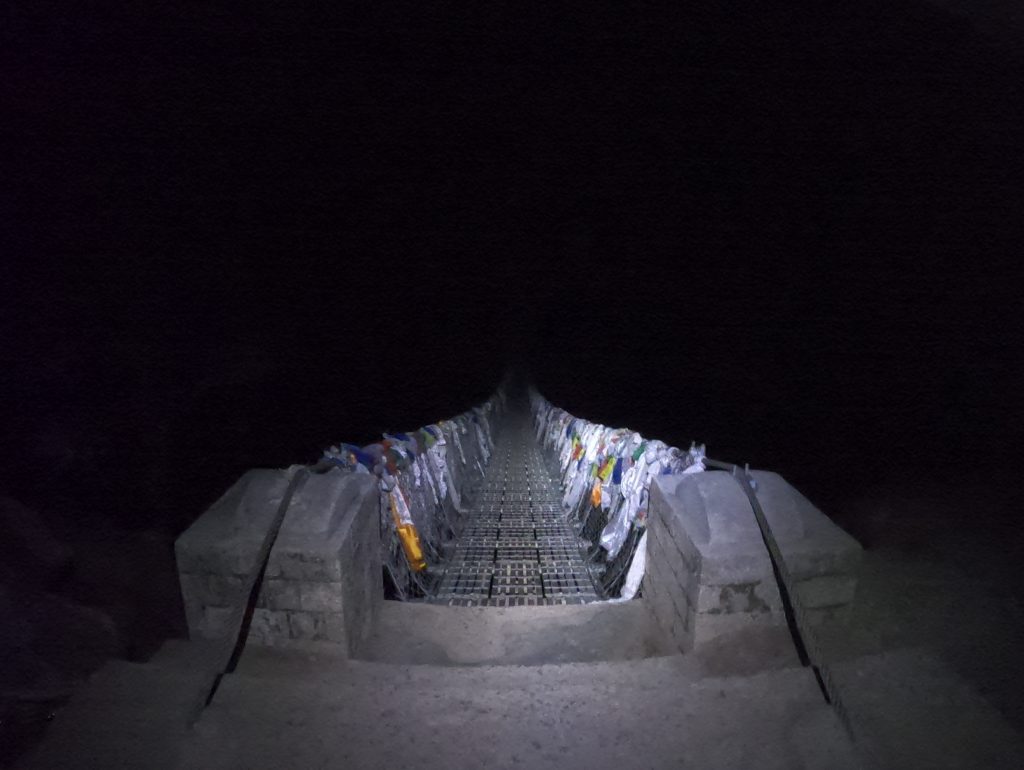
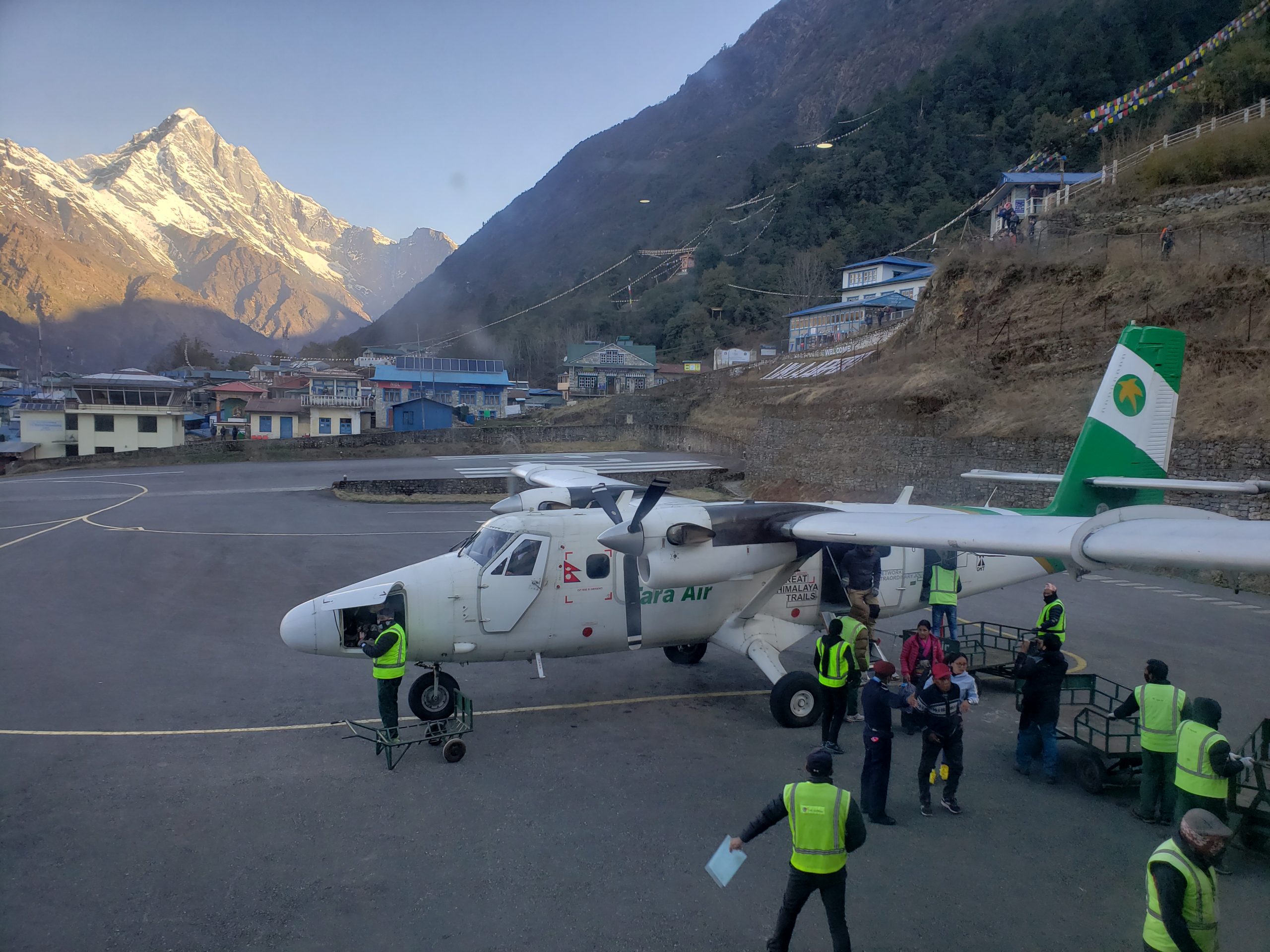
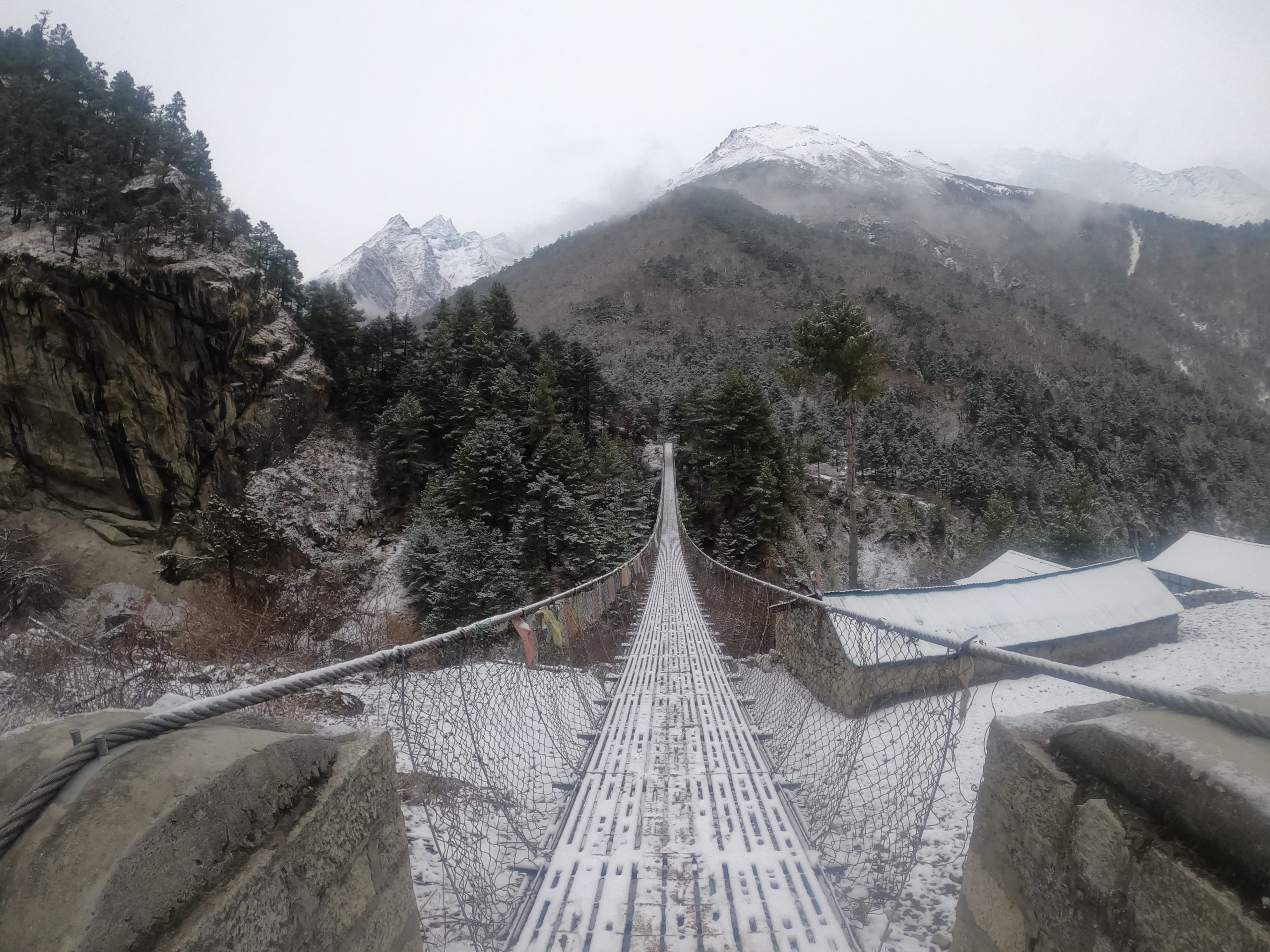
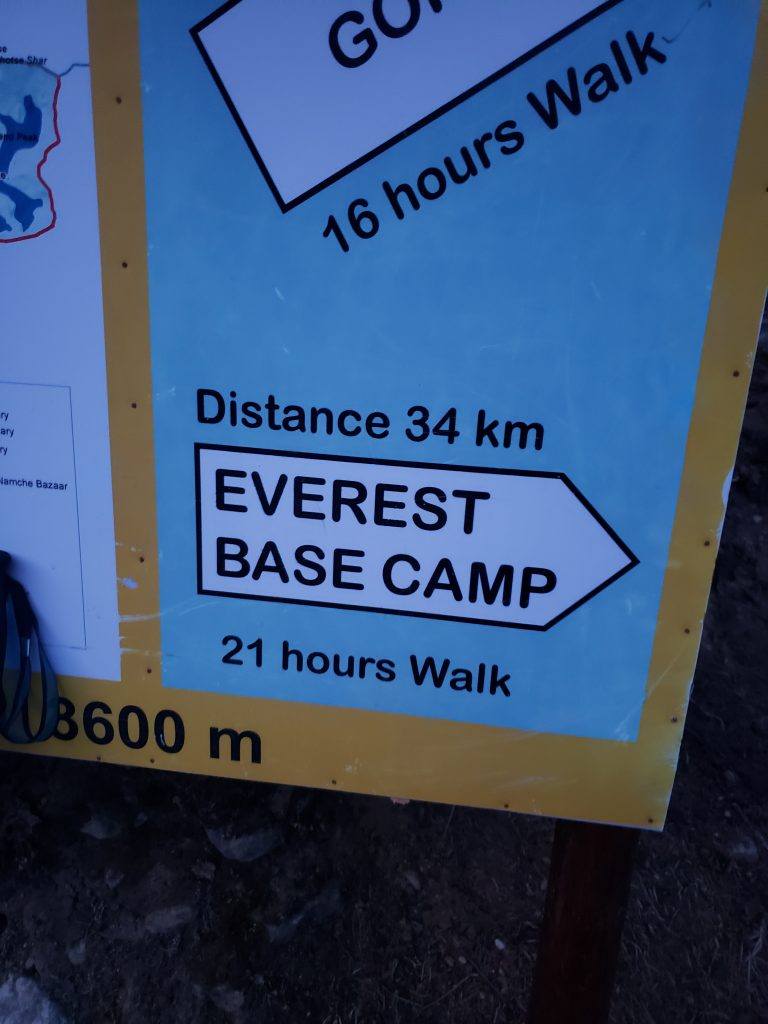
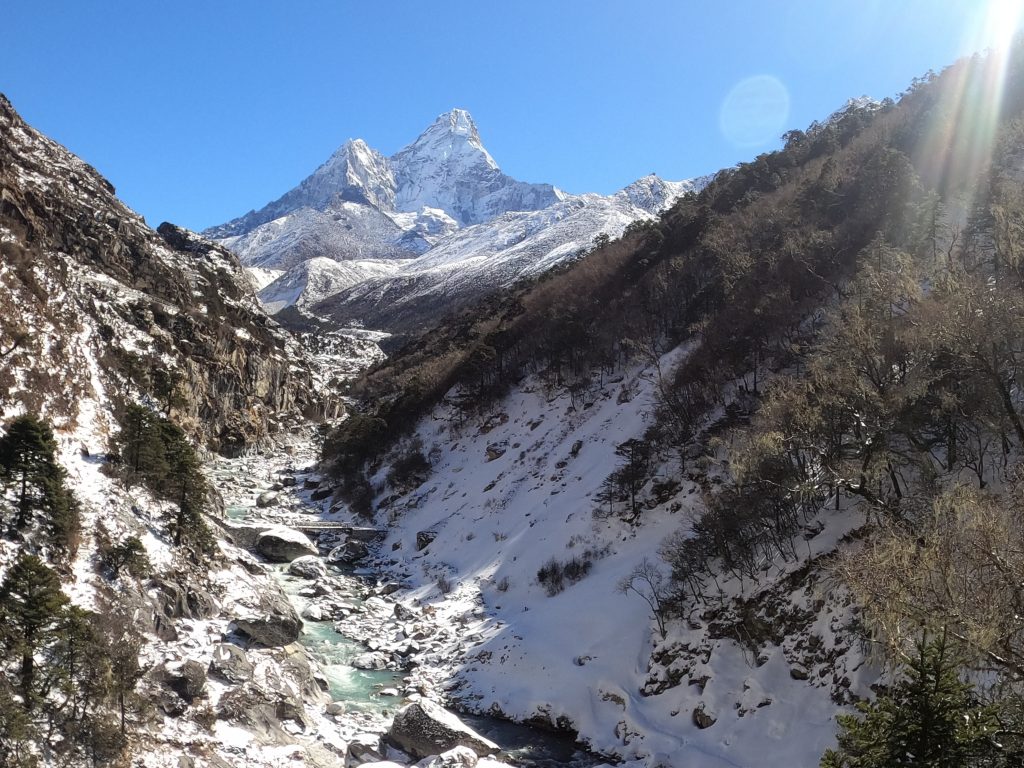
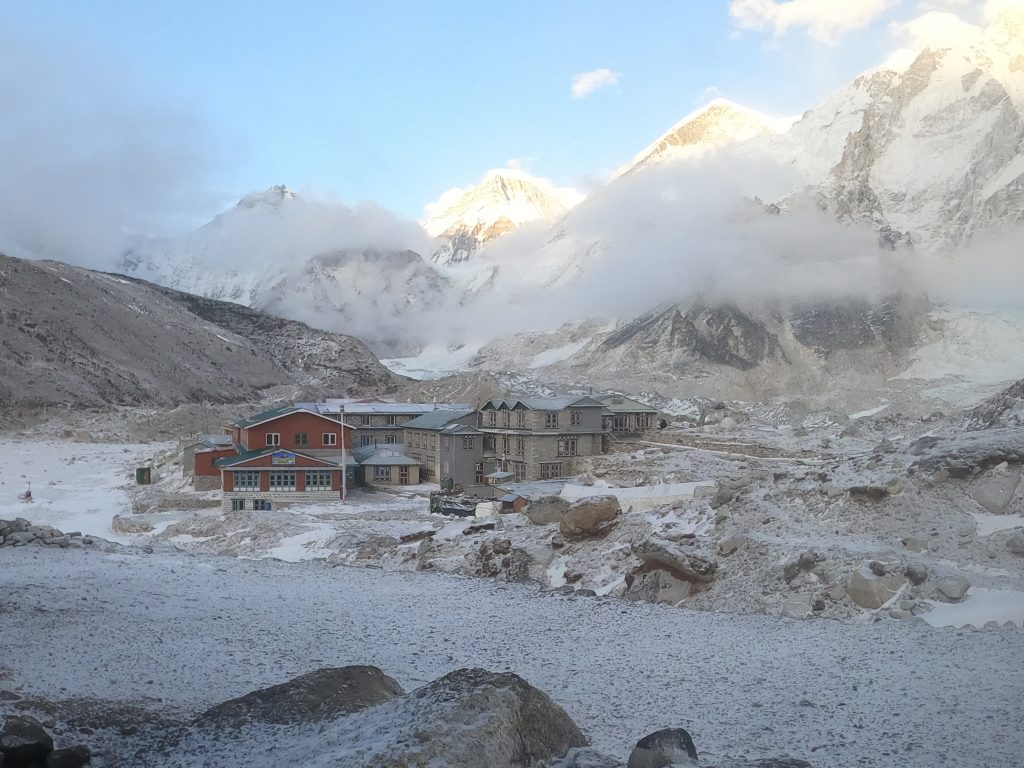
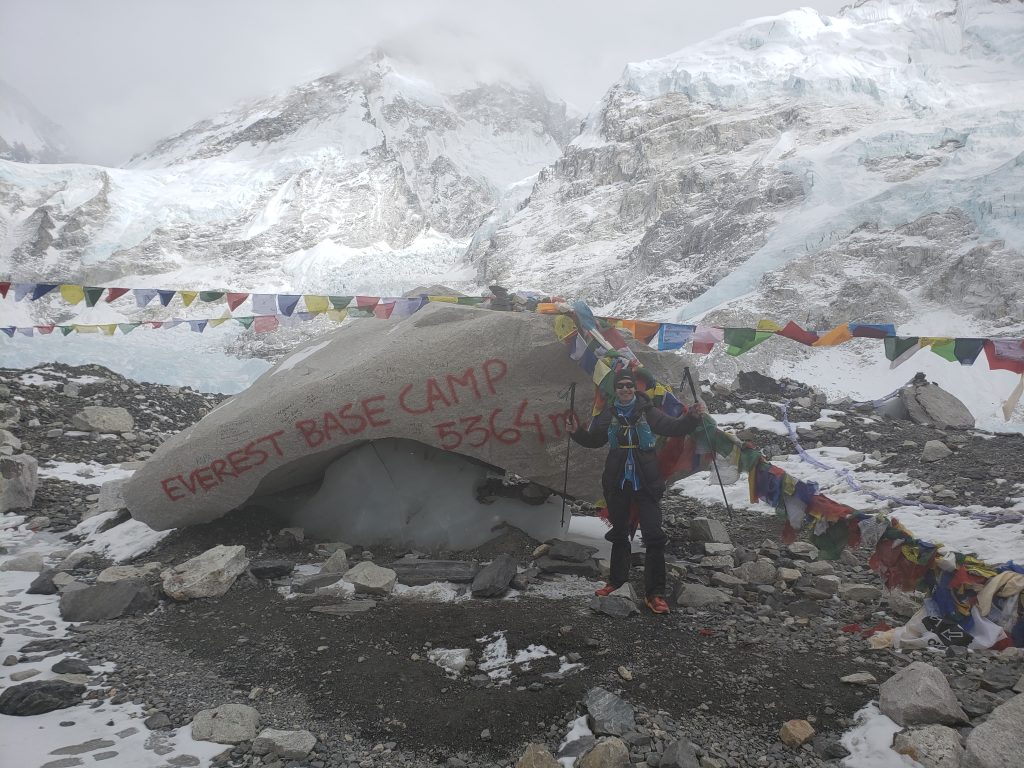
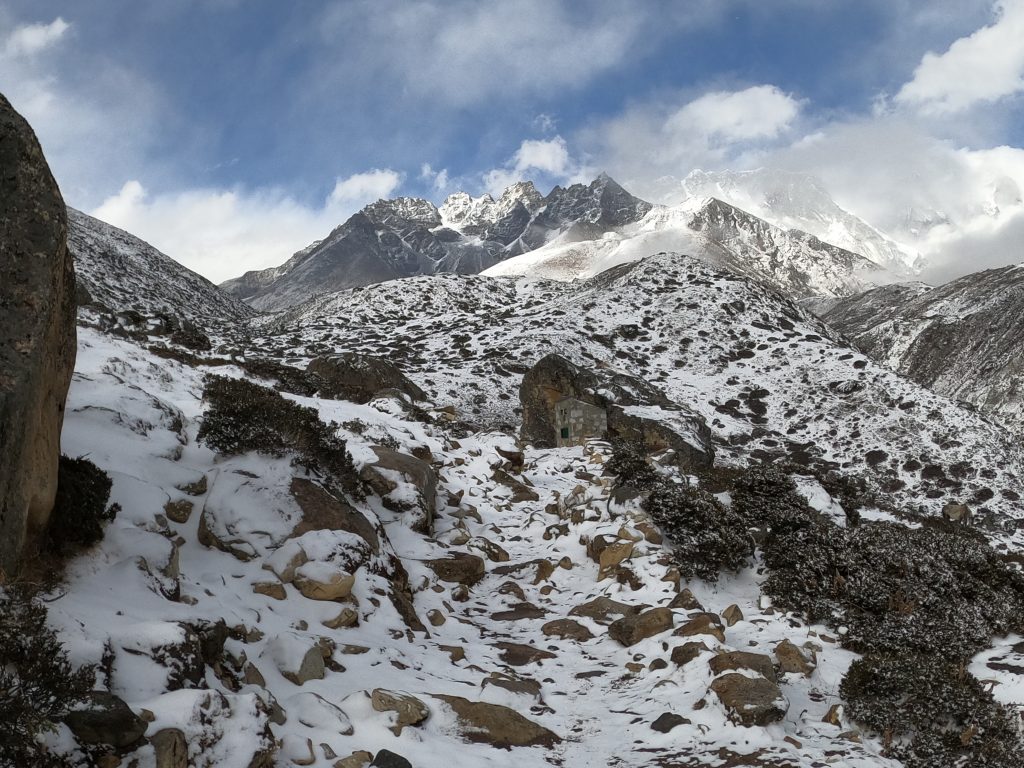
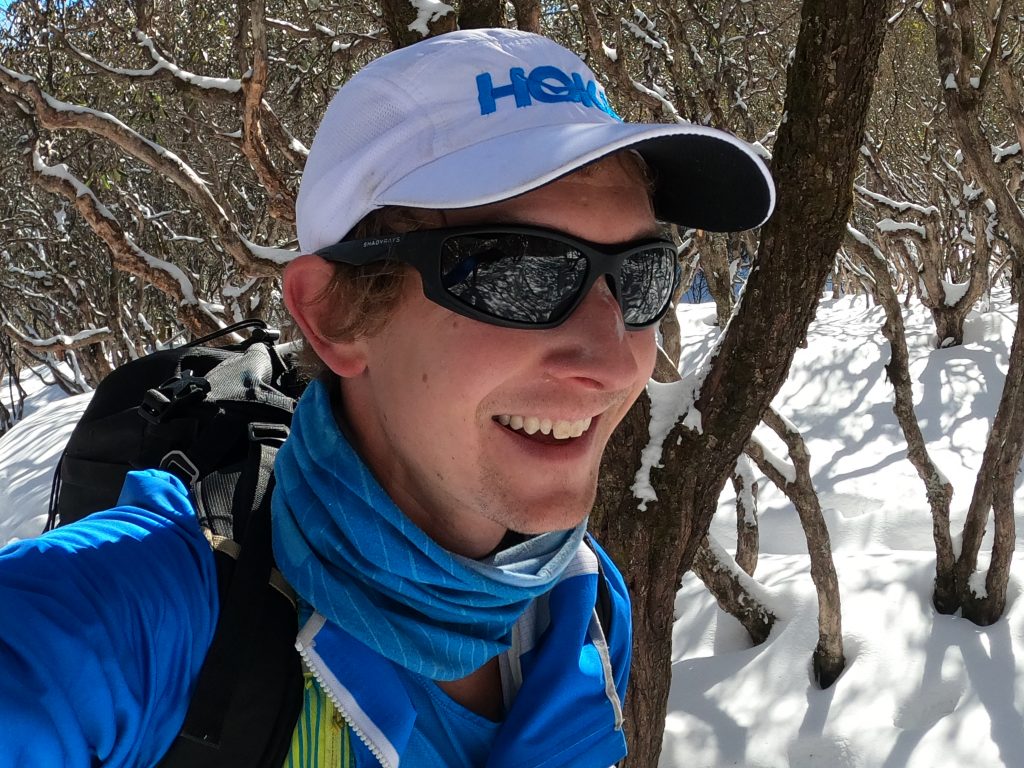
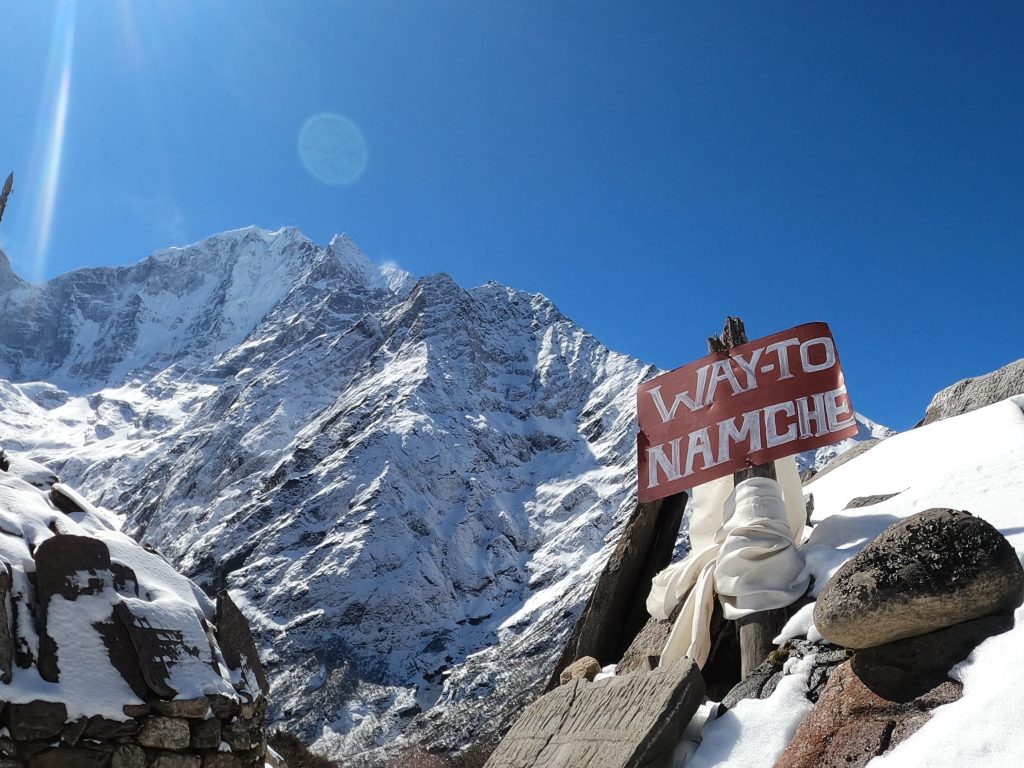
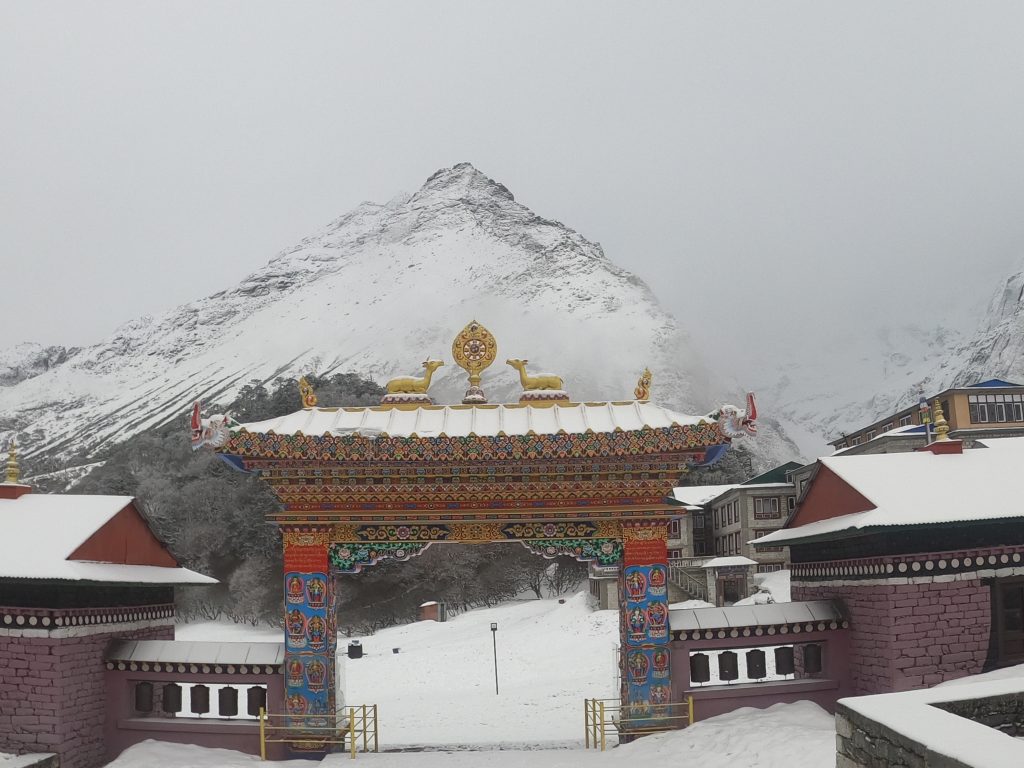
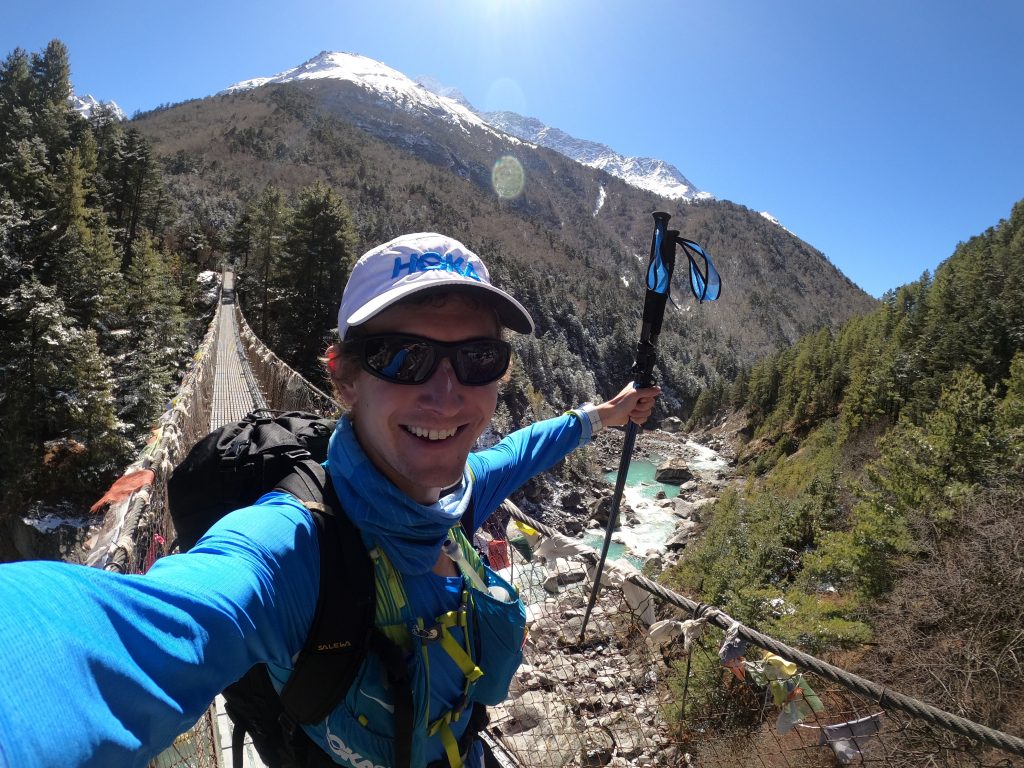

Incredible. I did that hike in 14 days!
Love this Ty – brilliant!!
Great effort my friend.
(I had booked to do the Tenzing Hillary Everest Marathon on the 29th May – but extremely doubtful now .. hopefully one day not too far away = probably next year 👍).
Enjoyed your experience very much ! I felt it! The cold, the cravings, listening to ones inner self. The town’s, the trekkers, the terrain…all so real (never have I been there, only in books!) and the suspension Bridges and the trillion stars! I felt the ball peen pain in the knees too. Thanks, Ty, for enriching my Saturday morning in this virus ridden world with one of my favorite places on Earth. I’d love to know how you feel post excursion as my own knees have been quite affected over the years from descending steep, hard trails while hiking.
Thanks for taking me away briefly from all of this covid 19 and reminding me of a time when I was young fit and armor plated. I felt your pride and pain.
I loved reading this… I just did EBC this past fall over 12 days and cant BELIEVE you made it in less than 24. I KNOW THE DESPERATION you felt of needing to descend to feel better. CONGRATS MAN!!!
Amazing read! And great job! Thanks for sharing!! Truly inspirational!
What a fun and inspirational read! Can’t wait to visit Nepal some day. Won’t be going as crazy as you but it would be nice to imagine people like you running the whole way while I walk. Would give me a mental boost. 🙂
Just listened to your interview with Buzz on the FKT podcast. That led me to this site for your report. Great job! Hey, I am sequestered right next door in Morro Bay. Thinking about doing one of my favorite Big Sur backcountry runs April 11. (25-30 miles depending) It is a wonderland of difficult trails with ample social distancing. Would you and your training partner be interested?
In any case, keep up the good work. I look forward to watching you reach many big podiums in the years to come!
Jeff Cannon
Morro Bay, CA
You passed our small group on the way up and down that day. Pretty amazing! We heard there was “this guy from Boston” running the trail in one day. Much respect and congratulations!
Kim
Great Barrington, MA
Hey! Very cool to connect. Impressed that you found me 🙂 Hope you guys had a great time out there. I’m extremely grateful now to have gotten one last big adventure in before the lock-down… Stay safe!